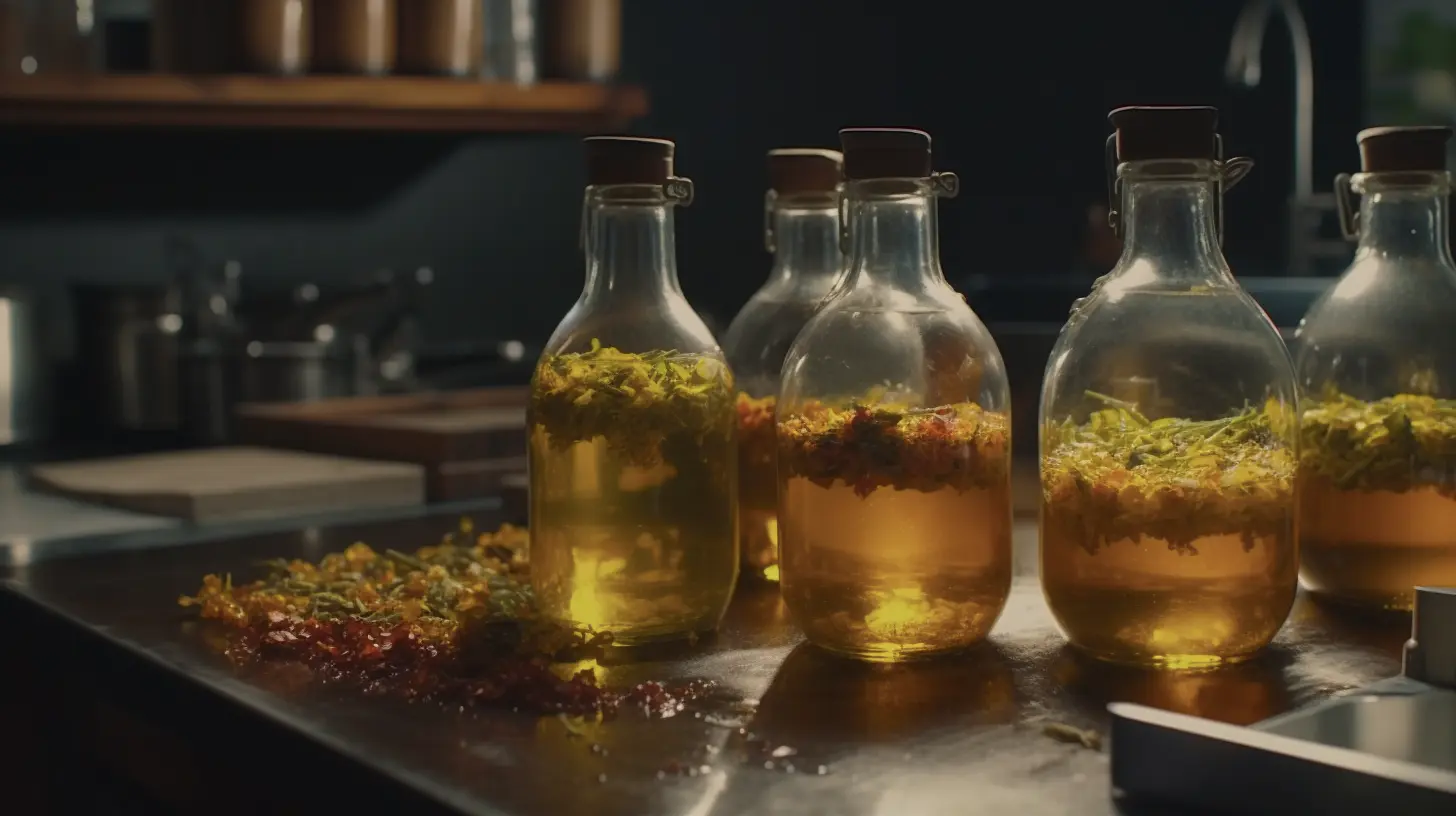-
Natural Soaps
- Rosemary Goat Milk Soap New
- Peppermint Tea Tree Goat Milk Soap
- Peppermint Spearmint Goat Milk Soap
- Patchouli Lavender Goat Milk Soap Hot
- Oatmeal Lavender Goat Milk Soap
- Oatmeal Honey Goat Milk Soap
- Oatmeal Almond Goat Milk Soap
- Lavender Rosemary Goat Milk Soap
- Lavender Goat Milk Soap
- Citrus Sage Goat Milk Soap
- Chamomile Lemon Goat Milk Soap
- Calendula Orange Goat Milk Soap
- Anise Goat Milk Soap
- 3 Wrapped Soap Bars for $15.00
- 3 Un-Wrapped Soap Bars for $14.00
The Art of Infused Oils: A Comprehensive Guide to Making and Using Them

Introduction:
Infused oils are a delightful way to enhance the flavors of your culinary creations or create natural skincare products. Whether you want to infuse oils with herbs, spices, or aromatic ingredients, this comprehensive guide will walk you through the process. From selecting the right base oils to the infusion techniques and creative uses, discover the art of making infused oils and elevate your cooking and skincare endeavors.
Section 1: Selecting Base Oils
Choosing the right base oil is crucial for creating high-quality infused oils. Opt for neutral oils like grapeseed, sunflower, or extra-virgin olive oil. These oils have mild flavors that won’t overpower the infused ingredients, allowing their unique characteristics to shine through. Ensure you use high-quality oils for the best results.
Section 2: Preparing the Infusion Ingredients
a) Herbs and Spices: Select fresh, organic herbs or dried spices to infuse your oils. Popular options include rosemary, thyme, basil, garlic, cinnamon, or chili flakes. Wash fresh herbs thoroughly and pat them dry before use. Grind or crush dried spices to release their aromatic oils.
b) Aromatic Ingredients: Explore the world of aromatic-infused oils by using ingredients like citrus peels, vanilla beans, or lavender flowers. These add delightful scents and flavors to your oils. Use organic and pesticide-free sources for the best results.
Section 3: Infusion Techniques
a) Cold Infusion: This method involves placing the chosen ingredients in a jar and covering them with the base oil. Seal the jar tightly and store it in a cool, dark place for several weeks. The oil slowly absorbs the flavors and aromas of the infused ingredients. Remember to shake the jar gently every few days to aid the infusion process.
b) Heat Infusion: Heat infusion is quicker and involves gently heating the base oil and infused ingredients. Use a double boiler or a heat-resistant container placed in a pot of water. Heat the mixture on low heat for an extended period, stirring occasionally. Once the desired infusion is achieved, strain the oil to remove the solid ingredients.
Section 4: Storing and Using Infused Oils
Store your infused oils in glass containers with airtight lids in a cool, dark place to preserve their flavors and extend their shelf life. Label each container with the name of the infused oil and the date of preparation for easy reference.
Creative uses for infused oils:
– In the Kitchen: Infused oils can add a burst of flavor to your dishes. Drizzle them over salads, roasted vegetables, or grilled meats. They can also be used as dipping oils or in marinades and sauces.
– Skincare and Aromatherapy: Infused oils have various skincare benefits. Use lavender-infused oil as a relaxing massage oil, or add chamomile-infused oil to your bathwater for a soothing soak. Incorporate infused oils into homemade lotions, balms, or natural skincare products for their therapeutic properties.
Conclusion:
Making infused oils is an art that allows you to unleash your creativity in the kitchen and skincare routines. By selecting quality base oils, infusing them with herbs, spices, or aromatic ingredients, and using proper techniques, you can create an array of flavorsome culinary delights and beneficial skincare products. Explore the possibilities, experiment with different combinations, and enjoy the wonderful world of infused oils.

